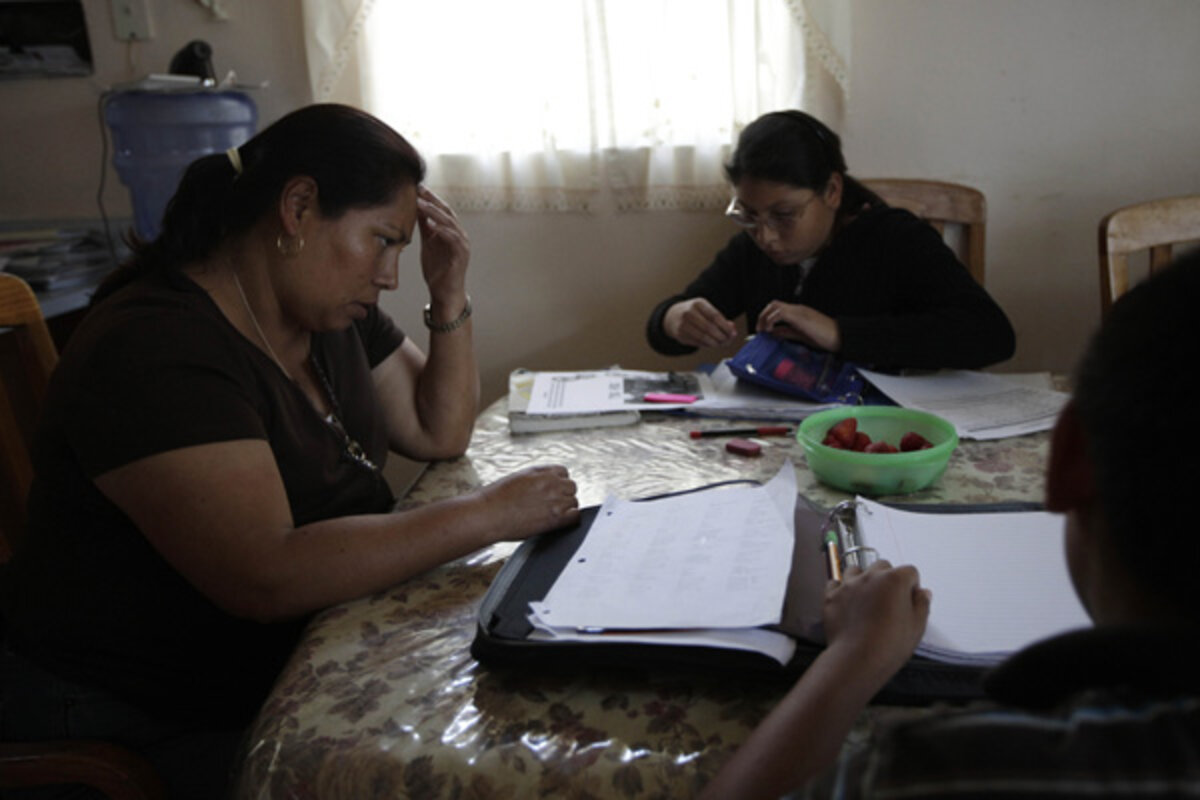Unemployment benefits: How people survive when they’re gone
Loading...
After a seven-week, highly publicized battle over extending unemployment benefits for millions of Americans out of work for longer than six months, President Obama signed the extension into law Thursday in the Oval Office with little fanfare.
But while most of the country was following the debate in Washington on television and in print, the 2.8 million people whose benefits had run out were figuring out how to feed their families and pay rent without the average $311 weekly checks.
“The general feeling that people have regarding their government benefits is one of fear and lack of control,” says Gerry Brisson, senior vice president of advancement at the Gleaners Community Food Bank of Southeastern Michigan, which is based in Detroit, a city where one in five workers is unemployed.
“It’s really hard for families to plan when things are so up in the air.”
And while they have been assured the two months’ payments will be paid retroactively, the uncertainty isn’t over. Many will have to wait weeks, or even a month, for the checks to come through.
Nearly half of the country’s 14.5 million unemployed have been out of work for more than six months. For those who rely on unemployment benefits to pay for food and rent, how have they survived the last two months?
“Families are making day-in day-out decisions,” says Mr. Brisson. “They’re waking up in the morning and thinking ‘OK, how do I get food for my kids now that school is out,’ and the two free meals [afforded to them] aren’t there?’ ”
The first option for many is to turn to families and friends for support, say emergency services providers. But as the months wear on, many find those resources harder to tap.
“When you feel like you can’t keep going back to family for food and money, people turn to government assistance or emergency food programs,” says Andrew Schiff, CEO of the Rhode Island Community Food Bank.
The food pantries and soup kitchens that Mr. Schiff works with have seen a 50 percent increase in the number of meals provided – from 37,000 in 2008, to 54,000 this past May. (Rhode Island has the country’s fifth-highest unemployment rate, at 12 percent.)
That picture has been repeated throughout the country’s hardest hit states. As of last January, the number of people receiving emergency assistance through the federal food stamp program increased 44.3 percent over pre-recession levels, an increase of 12.1 million people, according to data from the Department of Agriculture, Food and Nutrition Service. Reliance on emergency cash assistance through the federal government's Temporary Aid for Needy Families program has also increased.
But many are also starting to skip meals either because they are ashamed to ask for help time and time again, or because the safety net programs they rely on simply cannot provide everything they need, say Brisson and others who provide emergency services in regions hit hard by unemployment.
“We’ve never seen anything like this,” says Anicarmen Ortiz, director of Gateway Community Outreach, which for 35 years has provided food and rental assistance for families living in and around Fort Lauderdale, Fla., a state that has an 11.4 percent unemployment rate.
Her agency fed 57 people dinner Thursday night at a site located in one of the county’s most affluent areas says Ms. Ortiz. Before June, they rarely served more than 20 meals at the site. And they’re having to do more with less.
“Donations have decreased, including in-kind, the funding from foundations, it’s less,” says Ortiz. “Everything is less, less, less and the need is greater, greater, greater.”
Only three agencies providing emergency rental assistance in Broward County, where Gateway is based, have funding left to help people stay in their homes. Everyone else, she says, has already depleted their annual budgets for the program.
“It’s overwhelming,” says Ortiz – a sentiment that emergency services providers interviewed for this article repeated.
With unemployment projected to hover around 10 percent for the rest of the year, the unemployed will likely have to depend on aid to survive for some time to come. And service providers will have to start thinking about how to mitigate the long-term, as well as immediate, negative impacts of protracted unemployment, like malnutrition and depression.
"While we’re thinking about how families need money to make ends meet, we need to start providing support to families as they endure long-term unemployment," says Janice Cooper, executive director of the National Center for Children in Poverty.
RELATED:
Unemployment extension 101: what you need to know
Unemployment benefits extension approved by House now headed for President's desk
Unemployment insurance: Why extending it this time has been so hard




